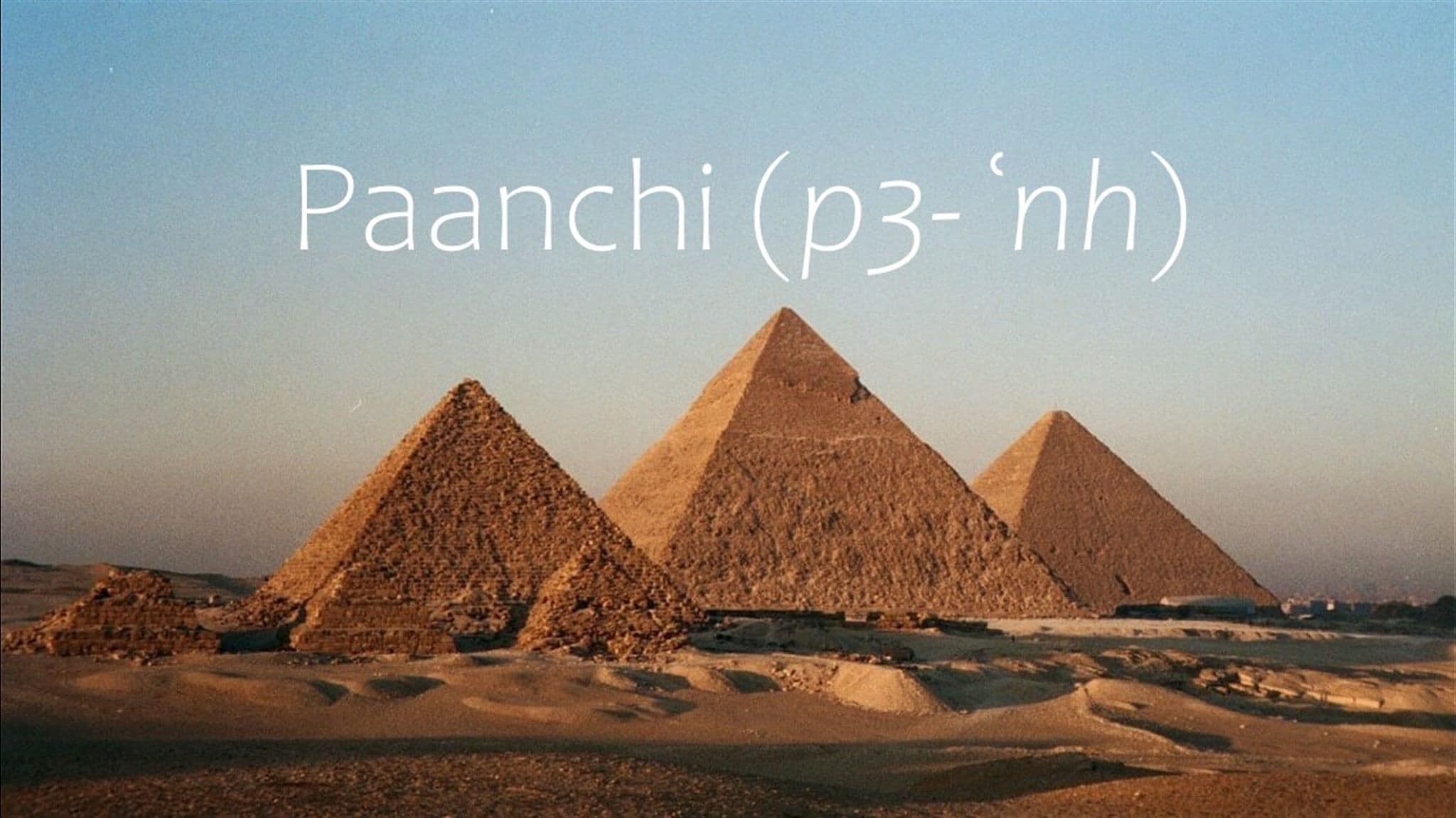Evidence #167 | March 15, 2021
Book of Mormon Evidence: Attestation of Paanchi
Post contributed by
Scripture Central

Abstract
Paanchi is an attested Egyptian name predating the time of Lehi.An Attested Egyptian Name
Paanchi was the name of one of the sons of the Nephite Chief Judge Pahoran who contended for the judgement seat after the death of their father (Helaman 1:3). Paanchi was put to death for attempting to raise an insurrection when his brother was appointed as governor by the voice of the people (Helaman 1:7–8).
Hugh Nibley was the first to notice that Paanchi is an authentic Egyptian name (p3- ʿnh),1 which means “the living one.”2 The name’s first attestation comes from the Thirteenth Dynasty (1800–1600 BC), and it was a popular Egyptian name thereafter.3
In 1966 one critic of The Church of Jesus Christ of Latter-day Saints wrote a series of inflammatory letters to several ancient Near Eastern scholars, seemingly designed to elicit negative statements about Latter-day Saint scriptures. This man received an unexpected response from William F. Albright, a prominent biblical scholar at Johns Hopkins University. While Albright was a Protestant (and hence not a believer in the Book of Mormon), he nevertheless wrote back:
As you know, when the Book of Mormon was written, Egyptian had just begun to be deciphered and it is all the more surprising that there are two Egyptian names, Paanch and Pahor(an)4 which appear together in the Book of Mormon in close connection with a reference to the original language as being “Reformed Egyptian.”
Unable to offer a viable explanation for how a name such as Paanchi could end up in the Book of Mormon, Albright vaguely suggested that Joseph Smith was some kind of “religious genius.”5
Frustrated by this unanticipated positive comment about the Book of Mormon, this man subsequently wrote to another scholar in England. Not mentioning Albright by name, he complained of “another scholar who is renowned in ancient Semitic studies” who “though a Protestant, he writes of the Book of Mormon like it had authentic Egyptian-Hebrew supports. He even offered me what he said were two good Egyptian names in the Book of Mormon … Why would he leave an impression that Joseph Smith was on the right track?”6
Conclusion
Because Egyptology was still in its infancy in 1830, there is no way that Joseph Smith could have known that Paanchi was an attested Egyptian name. And yet, as Albright pointed out, it shows up next to another authentic Egyptian name in a text that purports to have been engraved in an Egyptian script (Mormon 9:32; cf. 1 Nephi 1:2; Mosiah 1:4), providing valid linguistic support for the Book of Mormon’s ancient Near Eastern origins. The name Paanchi may have become known to the Nephites by means of the plates of brass which contained historical information about ancient Israel and their interactions with other nations including Egypt and its people.
Matthew L. Bowen, “‘Swearing by Their Everlasting Maker’: Some Notes on Paanchi and Giddianhi,” Interpreter: A Journal of Latter-day Saint Faith and Scholarship 28 (2018): 155–170.
“Paanchi,” Book of Mormon Onomasticon, last updated November 11, 2017, online at onom.lib.byu.edu.
John A. Tvedtnes, John Gee, and Matthew Roper, “Book of Mormon Names Attested in Ancient Hebrew Inscriptions,” Journal of Book of Mormon Studies 9, no. 1 (2000): 40–51, 78–79.
Hugh Nibley, Lehi in the Deseret/The World of the Jaredites/There Were Jaredites (Salt Lake City, UT: Deseret Book, 1988), 22–23, 27.
Hugh Nibley, An Approach to the Book of Mormon (Salt Lake City, UT: Deseret Book, 1988), 283–284.
Hugh Nibley, Since Cumorah (Salt Lake City, UT: Deseret Book, 1988), 194.
- 1. Hugh Nibley, Lehi in the Deseret/The World of the Jaredites/There Were Jaredites (Salt Lake City, UT: Deseret Book, 1988), 22–23, 27; Hugh Nibley, An Approach to the Book of Mormon (Salt Lake City, UT: Deseret Book, 1988), 283–284; Hugh Nibley, Since Cumorah (Salt Lake City, UT: Deseret Book, 1988), 194. Nibley had suggested that this was the same name held by the Pharaoh of the Twenty-fifth Dynasty. Most Egyptologists currently read that name as Piye or Piy. See Ian Shaw, The Oxford History of Ancient Egypt (New York, NY: Oxford University Press, 2000), 337, 347, 353–355.
- 2. “Paanchi,” Book of Mormon Onomasticon, last updated November 11, 2017, online at onom.lib.byu.edu.
- 3. Matthew L. Bowen, “‘Swearing by Their Everlasting Maker’: Some Notes on Paanchi and Giddianhi,” Interpreter: A Journal of Latter-day Saint Faith and Scholarship 28 (2018): 159–160; Shaw, The Oxford History of Ancient Egypt, 309, 331, 333, 349; “Paanchi,” online at onom.lib.byu.edu.
- 4. Recent analysis of the earliest manuscripts of the Book of Mormon suggests that the correct spelling of Pahoran was Parhoron or possibly Pahoron. See Royal Skousen, Analysis of Textual Variants of the Book of Mormon Part Four: Alma 21–55 (Provo, UT: Foundation for Ancient Research and Mormon Studies, 2007), 2635–2637.
- 5. William F. Albright to Grant S. Heward, Baltimore, Maryland, 25 July, 1966.
- 6. Grant S. Heward to I.E.S. Edwards, Midvale, Utah, 14 March, 1967. Thanks to Boyd Peterson, who discovered this correspondence and made copies available to the writer of this evidence summary.